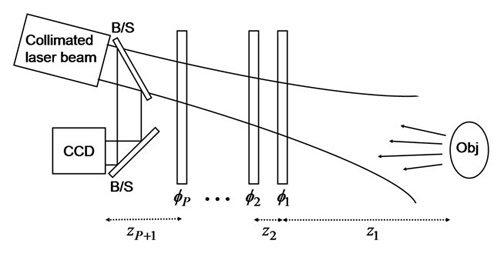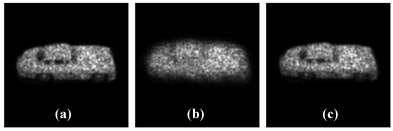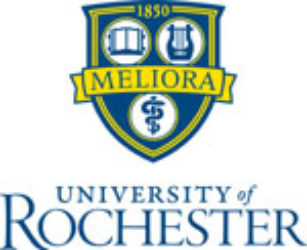Abbie Tippie’s Research
Atmospheric turbulence severely limits the resolution of many optical systems. Without compensation or correction techniques, telescopes and other imaging systems are limited not by the aperture size of the system but by ro, the size of the coherence diameter of the atmosphere (Fried’s parameter). This creates a unique set of problems when imaging large or multiple objects. The result is anisoplanatic imaging, or space-variant imaging in which portions of the object pass through different regions of turbulence. My research involves anisoplanatic image reconstruction of objects in the presence of extended volume turbulence.
For our work, we are currently using coherent laser illumination to image through atmospheric turbulence. Using digital holography or heterodyne detection techniques, we can recover both the phase and amplitude information of the optical field in the plane of detection. Knowing the phase and amplitude of the field allows us to propagate the field to any plane. We use this information in a nonlinear optimization process to maximize the sharpness of the image in the object plane. The goal of our research is to develop mathematical techniques to computationally estimate and correct for volume phase errors.

We have shown this nonlinear optimization technique to be successful at solving for phase aberrations in multiple planes and reconstructing an image of the object for digital simulation experiments. We simulated realistic imaging conditions, including strength of turbulence, propagation distance and detector size. We have taken careful consideration to avoid aliasing and wrap-around effects that can be present in digital simulations.

In our future work, we would like to increase the robustness of this technique to allow for even more challenging imaging conditions such as optimization over unknown phase screen locations and forward model / reconstruction model mismatch. We are also in the process of performing laboratory experiments to further support this technique.
